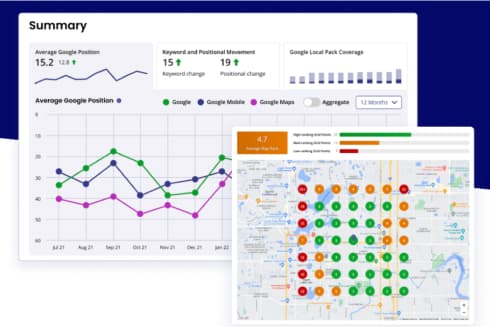How the 4 P’s of Marketing Transform Your Business Strategy
In the world of marketing, the concept of the 4 P’s – Product, Price, Place and Promotion – remains an essential guide for designing effective strategies. This classic approach, developed by Philip Kotler, offers a structured framework that helps companies meet their customers’ needs and achieve their business goals. By understanding and applying these four dimensions, companies can create more attractive and efficient offerings, optimize their resources and improve their market positioning.
In this article, we will explore each of the 4 P’s and how their correct implementation can make a difference in the success of your business.
What is Marketing?
The term “marketing” can often be confusing, especially when translated from English. The word comes from “market,” which in Spanish translates as “marketplace,” and the suffix “-ing” indicates an ongoing action. So, if we break down the term, “marketing” can be understood as “the action of marketing at the current time.”
However, this definition only scratches the surface. Marketing encompasses much more than simply putting a product on the market. It involves a series of activities and strategies intended to make a product or service accessible and attractive to the consumer.
This is where the marketing mix, also known as the 4 P’s of marketing, comes in. This fundamental concept groups together the main strategies that a company must consider in order to achieve effective marketing of its products or services.
What is the Marketing Mix or the 4 P’s of Marketing?
The marketing mix, also known as the 4 P’s of marketing, is the four fundamental elements that make up any effective marketing strategy: Product, Price, Place and Promotion. These basic pillars are essential to influence the market and attract the target audience.
Although the terminology may vary, the core concept remains constant: the 4 P’s are the foundation of any successful marketing strategy.
In essence, what does it mean to be successful in business?
Vender.
However, this requires more than just opening a sales channel and showcasing your product. Building a strong brand is crucial, and this involves working on several pillars.
Let’s take a well-known example from Brazil: Havaianas. A little over two decades ago, it was a simple, inexpensive rubber sandal aimed at a low-income audience.
In 1994, the company launched Havaianas TOP, a new line with vibrant colors and an improved design. Through an original and fun advertising campaign, these sandals became an object of desire, despite their higher price.
Distribution was also transformed. New models and colours were adapted to the public’s tastes and presented in an attractive manner at points of sale. The result was significant growth and international expansion of the brand.
Havaianas not only improved its product, but also adjusted its price, optimized its distribution and created effective promotional campaigns. The balance of these four elements strengthened its brand and successfully positioned it in the market.
Now, let’s look at the role of each of the 4 P’s:
P for Product: A company must offer something valuable, whether it is a product or a service. This pillar focuses on defining the characteristics and attributes of what you offer. To do this, answer questions such as:
What needs or desires does your product/service satisfy?
What functions should it fulfill?
How and where will the customer use it?
What is your physical appearance and name?
How do you differentiate yourself from the competition?
Understanding your product’s life cycle will help you adapt your strategies as your product evolves in the market.
P is for Price: Price is crucial to a company’s viability, as it determines the revenue needed to cover costs and generate profits. Consider:
What is the value that the customer perceives?
How does your price compare to the competition?
What price range is acceptable for your market?
Are there specific promotions or discounts for different segments?
P for Place: This pillar refers to how and where customers find and purchase your products or services. It includes:
Where does your target audience search for your products?
What are the most effective distribution channels (physical or virtual)?
How can you improve the accessibility of your products?
It is not enough to have an online store; it is essential that it is well positioned and that it attracts the right audience.
P is for Promotion: Promotion goes beyond offers and discounts. It’s about communicating your brand and its solutions effectively. Ask yourself:
How and where can you deliver your marketing messages?
Which PR channels and actions are most appropriate?
How does your promotion compare to the competition?
These questions will help you design campaigns that truly capture the attention of your target audience.
Why is the Marketing Mix so Crucial?
For some, the 4 P’s of marketing may seem like just a basic checklist, something that helps but is not essential due to its apparent simplicity. However, the marketing mix is essential to guide a company, as it not only facilitates the sale of products, but also defines how to be more effective in acquiring and retaining customers.
Consider this classic question: If everyone needs to drink water, why do some brands sell more than others? Why can some brands charge higher prices and still have a high level of demand? The answer lies in how each brand manages its differences and builds its value.
Imagine a bottle of water sold at a bottle shop. Although its price may be low, it is seen as a common product. In contrast, a bottle of water from a special source, with unique mineral properties, may be perceived as a premium item. This perception of value is due to the precise fit of the 4 P’s.
The 4 P’s are not static; they adapt to each situation to maximize benefit for both the customer and the company. This means that a brand can modify its product, adjust its price, improve its distribution and refine its promotion to stand out in a saturated market.
Success therefore depends not only on offering a good product, but on how those offerings are presented, distributed and promoted. Strategic decisions on the 4 P’s allow companies to create a clear and differentiated value proposition that attracts and retains customers.
The New Era of Marketing: Incorporating the New P’s into the Marketing Mix
Although the traditional 4 P’s (Product, Price, Place and Promotion) are fundamental to any marketing strategy, market evolution and increasing consumer demands have led to the incorporation of new dimensions into the marketing mix. This expansion has given rise to what is known as the 8 P’s of marketing, which include People, Process, Presence and Productivity.
These new P’s not only enrich the marketing mix, but also respond to the need to adapt strategies to a constantly changing business environment. Here we show you how each of these new P’s can improve your marketing plan:
- People Understanding the consumer as an entity with wants, expectations and needs is crucial for success. Communication needs to be more personalized, and to achieve this, it is essential to know your customer’s profile thoroughly. This includes basic information such as gender, age and economic class, as well as specific data related to the sector and the product.
It is also important to consider the people within the company. Employees must be well informed and motivated, as their commitment can positively influence the brand image and product promotion. A motivated team becomes an excellent brand ambassador, thus improving the external perception of the company. - Process The process encompasses the company’s internal workflows, methodologies and procedures. It is essential to review and align these processes with the demands of customers and employees. When processes are adjusted to improve the consumer experience, this translates into a positive perception of the brand. Adapting processes to customer needs ensures greater satisfaction and can increase customer loyalty.
- Presence Presence refers to how the customer perceives the tangible elements of the business, such as the quality of the employees, the facilities, the design of business cards, and the layout. These physical elements contribute to the overall perception of the business. The way a company presents itself visually and how its facilities and staff are perceived can significantly influence the customer’s decision.
- Productivity and Quality Productivity focuses on efficiency in the execution of services, using resources optimally to reduce costs and maximize results. Quality, on the other hand, ensures that the product or service meets customer expectations and is delivered under agreed conditions. Both dimensions are especially important in the service sector, where perceived quality can make a big difference in customer satisfaction.
These new P’s are particularly relevant in digital marketing, where understanding your target audience and optimizing your processes are key to success. Incorporating these additional dimensions into your marketing mix will not only make your strategy more complete, but will also improve your results.
By taking a broader approach that includes the 8 P’s, your marketing plan will be more robust and tailored to current market demands. This comprehensive approach is a valuable differentiator for any company looking to stand out in a competitive environment.
The Key to Navigating Marketing
In the world of marketing, we should not dismiss any tool or model designed to effectively manage a brand. While some focus on the classic 4 P’s of the marketing mix, others opt for the more modern 8 P’s, as we have explored, to capture the public’s attention and highlight the unique benefits of each brand.
To achieve a successful marketing strategy, it is crucial to always be aware of changes in the environment that can affect customer decisions. Factors such as economic crises, the entry of new competitors or changes in purchasing habits can influence the market. A company that does not study these variables runs the risk of relying on luck to adapt to these changes and will face many more failures than successes.
Planning is essential, and the 4 P’s of marketing, no matter how they are named, offer an accessible and understandable framework, whether for a beginner in the field or a seasoned expert. Use these pillars to optimize your strategy and achieve more effective, high-quality sales.
Rely on these fundamentals to not only sell more, but to do so in a smarter and more efficient way.












